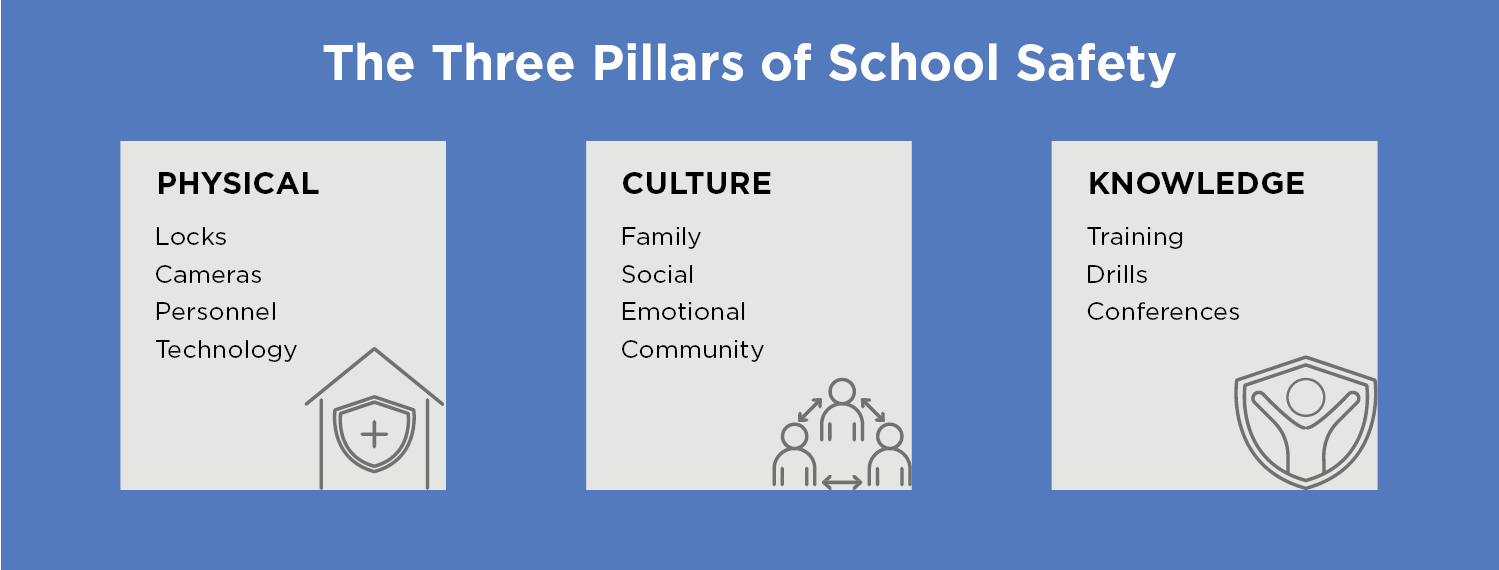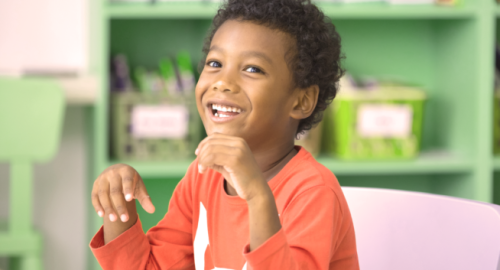We recently hosted a webinar about essential actions school administrators, teachers, and support staff can take to establish security measures, build a healthy school culture, and conduct proper training. In the webinar:
- Adam Coughran, President and Co-Founder of Safe Kids, Inc., discussed the research behind the H.E.R.O. Program. The program includes an age-appropriate student-facing curriculum, professional development for staff, an accessibility guide for students with special needs, and other materials specific to violence prevention.
- Dr. Jake Hollatz, Principal of St. Johns Lutheran School of Orange (CA), shared how his schools partnership with both Safe Kids and Raptor helps maintain peace of mind for his entire school community.
Below are highlights from the webinar. You can listen to the full conversation here.
Understanding the School Safety Problem
You have students worrying, Will I come home at the end of the day? That’s the fear I had as a police officer. Our [students] shouldn’t have that same fear.
– Adam Coughran, President, and Co-Founder of Safe Kids, Inc.
As part of a Safe Kids H.E.R.O. Program assignment, which instructs students to choose any modern-day problem and create a hero to solve the problem, a seventh-grader drew this comic strip. He named his hero The School Savior, who is shown in the comic strip stopping a shooter.
This fear of school violence is not limited to elementary and middle school students. A high school junior in Los Angeles, California, stated, We are the generation of active shooters. She saw the Virginia Tech, Sandy Hook, and Parkland tragedies and grew up worrying whether she would make it home from school each day.
When we consider how schools addressed safety issues in the past, we recognize many took a holistic approach. For example, after the Chicago school fire that took the lives of 92 children, schools did not put a firefighter in every classroom or arm teachers with fire hoses. Instead, schools installed fire alarms, made their buildings safer, and began conducting fire drills.
Experts agree that schools should take a similar balanced and holistic approach to address todays school safety issues. This holistic approach should include three pillars: physical, culture, and knowledge.

The first pillar is what we do to maintain physical safety, like having visitor management systems, door locks, cameras, and a school resource officer (SRO) on campus.
The second pillar is focused on culture and understanding our school community. For example, as schools reopen, there is a growing concern about mental health and how students are going to adjust as they return to the classroom. Social-emotional learning gives schools, students, and staff the resources needed to manage the culture of school safety and create a welcoming, caring school environment.
The final pillar is knowledge. Schools have an obligation to teach students and staff how to act in an emergency. Now more than ever, schools need to teach this critical information in a compassionate way to avoid triggering additional anxiety and fear. This involves training programs that are age-appropriate and empowering.
Creating Peace of Mind
As I was thinking about how…all of these pieces (Safe Kids, Raptor, and three pillars of safety) fit together, what came to mind was truly peace of mind.
–Dr. Jake Hollatz, Principal of St. Johns Lutheran School of Orange (CA)
St. Johns Lutheran School of Orange in California creates peace of mind for their school community by building and maintaining a culture that begins with safety and strong relationships. St. Johns has been a Safe Kids and Raptor partner for over 3 years.
The H.E.R.O. Program has given their students situational knowledge. It’s not just knowledge about what to do at school if there were to be an intruder, Dr. Hollatz says. Students who complete the program understand how to act in any emergency regardless of where they are. The program also ensures the school community learns the proper vocabulary. The Safe Kids program gives us…concrete vocabulary and [teaches us] how to use it.
The program also helps students and staff remain calm. We don’t just talk about [the program]. We just don’t learn it and take a quiz. We actually practice [the program] two times a year, stated Dr. Hollatz. This practice gives [our students and staff] real peace of mind that they can stay calm no matter what happens.
Peace of mind is also created as students, staff, and visitors see the Raptor software in action. They see the Raptor equipment…they see what they have to go through to be a volunteer on campus. They see the [badges] that our students get when they are tardy or late, and they know that we’re keeping track of their children and everyone is safe and accounted for. The school also screens every visitor and requires visitors wear badges. These badges help the school community identify one another.
[Our students] know if they ever see someone without a badge, they need to go tell an adult. This provides us safety in numbers, Dr. Hollatz continued. Raptor and Safe Kids create a wonderful culture…and provide us that peace of mind. It’s just been a really wonderful marriage between these two programs over the past few years.

No Cost Training with Raptor and Safe Kids Partnership
Raptor has partnered with Safe Kids, Inc. to provide Raptor customers with a no-cost, 1-school year subscription to the Safe Kids H.E.R.O. training curriculum.
This strategic partnership allows schools to combine the power of the Raptor platform and bolster their emergency preparedness with the Safe Kids curriculum. Current Raptor customers can fill out this form to get started.





